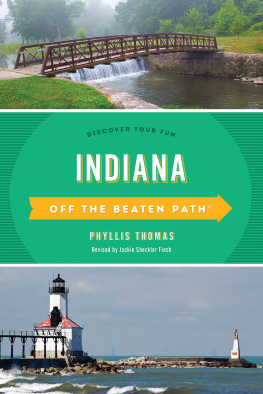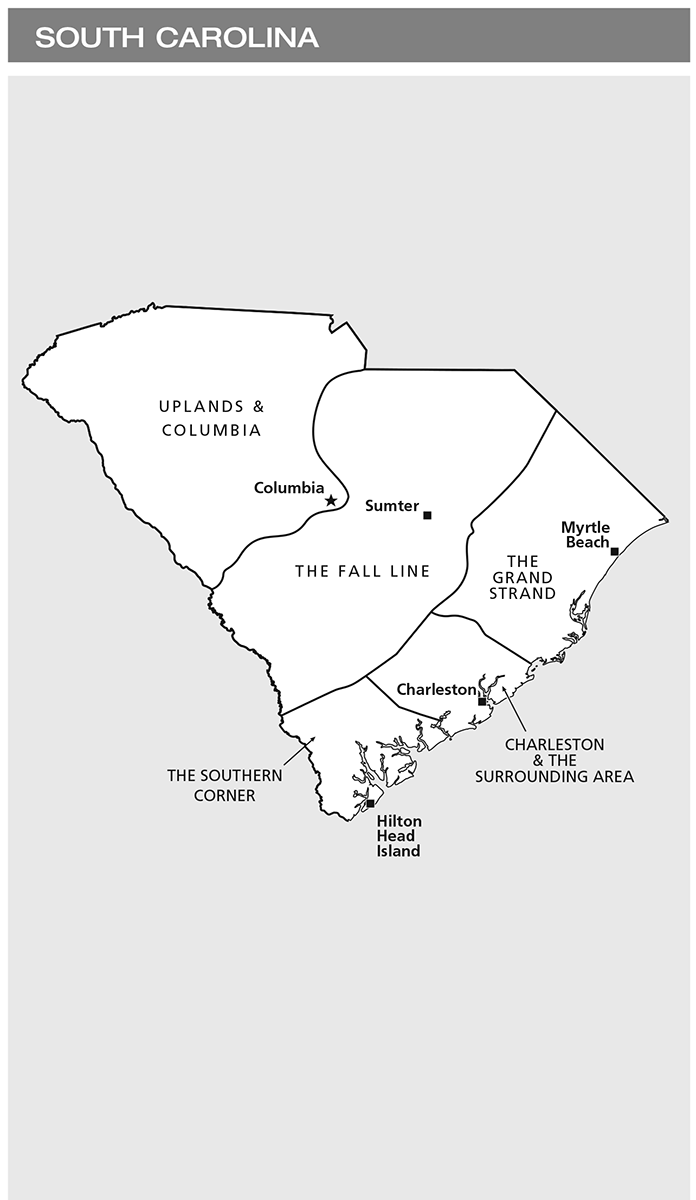All the information in this guidebook is subject to change. We recommend that you call ahead to obtain current information before traveling.
Copyright 1996, 1999, 2001, 2003, 2005 by William Price Fox
Revised text 2007, 2009, 2013 Morris Book Publishing, LLC
ALL RIGHTS RESERVED. No part of this book may be reproduced or transmitted in any form by any means, electronic or mechanical, including photocopying and recording, or by any information storage and retrieval system, except as may be expressly permitted in writing from the publisher. Requests for permission should be addressed to Globe Pequot Press, Attn: Rights and Permissions Department, PO Box 480, Guilford, CT 06437.
Off the Beaten Path is a registered trademark of Morris Book Publishing, LLC.
Editor: Amy Lyons
Project Editor: Lauren Brancato
Text Design: Linda R. Loiewski
Layout: Joanna Beyer
Maps: Equator Graphics Morris Book Publishing, LLC
ISSN 1545-5130
ISBN 978-0-7627-7327-5
Printed in the United States of America
10 9 8 7 6 5 4 3 2 1
About the Authors
William Price Fox grew up in the Low Country of South Carolina. He has worked as a salesman in New York, a scriptwriter in Hollywood, and a professor at the Writers Workshop at the University of Iowa. He is the author of seven novels and short story collections, including Southern Fried Plus Six, Ruby Red, Chitlin Strut & Other Madrigals, and Wild Blue Yonder. His latest book is Satchel Paiges America, from the University of Alabama Press. His articles and short stories have been published in magazines and newspapers such as Sports Illustrated, Travel & Leisure, Golf Digest, Esquire, The Saturday Evening Post, and the Los Angeles Times. A movie has been made based on his stories, 108 Stitches. He was the producer and moderator of the University of South Carolina E.T.V. Writers Workshop Program and lives in Columbia.
Lee Davis Perry was born in Greenville, raised in Charleston, and now spends most of her time in the Midlands on Lake Murraymaking her an all-around South Carolinian through and through. Lee earned a journalism degree from the University of Georgia in 1976, working in Atlanta advertising agencies, including J. Walter Thompson, following graduation. Her freelance work as an advertising consultant has captured national marketing awards, and her writing has found its way into regional and national magazines. Lee is the author of the book More Than Petticoats: Remarkable South Carolina Women and has also coauthored It Happened in South Carolina, South Carolina Curiosities, and numerous editions of Insiders Guide to Charleston, all for Globe Pequot Press.
Introduction
Right off the bat, let me get you started on your South Carolina travels with a little background on our distinctive state. My dad, who spent some time in Europe during World War II and who could hold the center of the room with the best of them, had his own theory about why South Carolina is so different from the rest of the country. When he was in Palermo, he said, he saw a painting of St. George slaying the dragon in which George was more than 6 feet tall and built like a wide receiver. The dragon came in at around 80 hands high, weighing more than 50 tons and throwing out a 60-foot sheet of blue-red flame. As he traveled north through Italy, Dad kept seeing the same painting, but while George stayed about the same size, the dragon kept losing weight and getting smaller. In Germany he was down to the size of a Clydesdale. Finally, in Copenhagen, Dad couldnt believe his eyes. That dragon still looked like a dragon, but the artist had shrunk him down to the size of a good-sized rabbit. Old George was holding him up by one ear, and I mean he couldnt have dressed out no more than four pounds, tops.
Then he wrapped it up. The way I see it, South Carolina is about like Palermo. We have more imagination down here, and you know, bigger visions. You get north, up above Richmond, and its like Copenhagen.
Along with this rich imagination, we also have the Gullah dialect, which is still heard down in the Low Country and out on the sea islands. Down here they still read heads and work roots. They believe that haint blue and haint green painted on the doorjambs and window trims will keep the evil spirits away and that if you sweep your yard before the sun comes up, Doctor Death will keep on the other side of the road and go on about his business.
In Gullah, he stands for he, she, or it, and um stands for it, her, him, or them. Many of the words and phrases run on pure sound and cadence, and with the high-low jackrabbit delivery much of it sounds like calypso. If it sounds good, it is good. Proper names can be name brands, road signs, or a quick and clever riff from a new tune. One woman near Beaufort, who was named during the Kennedy funeral, proudly displays Cathedral Rotunda Johnson above the red birds on her rural delivery mailbox. And over near Fripp Island, the town of Pocotaligo is the compression of poke a turtles tail and he will go. Of the translatable Gullah proverbs and bromides, here are a fast few:
Ef you play wid puppy, ee lick you face. (Familiarity breeds contempt.)
Ef you ent hab hoss to ride, ride cow. (Half a loaf is better than none.)
Po buckra an dog walk one pat. (The poor man and the dog walk the same path.)
If South Carolina looks like anything, its a slice of pie that has not only been badly cut but lifted out of the pan much too early. Starting in the northwest corner at the Chattooga Riverabout the spot where Sheriff James Dickey, the late poet-in-residence at the University of South Carolina, leaned on his patrol car in the film Deliverancethe South CarolinaNorth Carolina line runs east for 333 rugged miles to Little River and the Atlantic Ocean. From Little River the uninterrupted shoreline, with some of the best beaches in the country, stretches south more than 200 miles to Tybee Sound, only a few miles from Savannah, Georgia. From here up the wide Savannah River back to the northwest corner and the Chattooga, its 240 miles.
Roughly paralleling the South Carolina coastline and running across the center of the state is another linethe Fall Line. This separates two distinct regionsthe Upcountry and the Low Country, with the sandy Midlands in between. Most of the Upcountry is plateaus with rolling hills, ragged woods, fast-moving streams, and red-clay earth. First settled by Germans, Scots-Irish, and Welsh early in the 18th century, by 1800 the Upcountry had more than 30,000 small farmers who, with their self-sufficient way of life, had almost nothing in common with Low Country plantation owners. Today, while this region still has a great deal of farmland that produces soybeans, peaches, cotton, and tobacco, it is also a highly successful national and international manufacturing center. The giant BMW plant in Greenville is a notable example.
exploding a few south carolina myths
A hoop snake will not put its tail in its mouth and roll down a hill.
A diamondback rattler will not wrap around your leg to hold you still while it bites. Now that would be scary!
A red fox will not run on three legs (resting a fourth) when running from the dogs.






